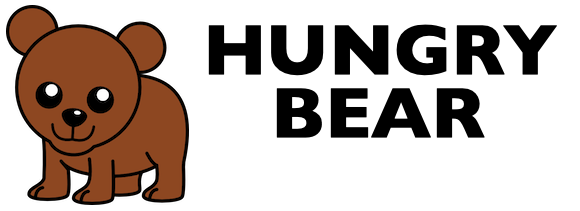What Is Talking Music Called?
Have you ever heard a song and wondered to yourself, “What is this style of music called?” Well, you might be listening to a genre of music referred to as talking music. Throughout this blog post, we will delve into what talking music is, the various genres that comprise talking music, as well as its history. By the conclusion of this post, you’ll have a better comprehension of talking music and its many forms.
Read To Learn More Info: Peter Yarrow Facebook page
What Is Talking Music?
Have you ever heard of talking music? It is a type of lyric-based music that often incorporates the spoken word. Talking music is not just limited to rap or hip hop, as it can be found in any genre, from folk to blues and gospel. This style of music encourages audience participation, making it an engaging and interactive experience. So what is talking music called? Let’s explore further!
Talking music has its roots in folk, blues, and gospel traditions. It usually uses instrumental accompaniment, as well as vocals or spoken words. It can be used to tell stories, express emotions, and discuss social and political issues – the possibilities are endless! Music is an art form and cultural activity that involves creating or arranging sound for an aesthetic, emotional, or expressive purpose.
Singing is the act of producing musical sounds with the voice – there are many different singing styles and techniques, such as classical, jazz, folk, vocal improvisation, choral, opera, and even a cappella! Music theory is the practice and study of how music is composed and performed, and it’s essential for understanding talking music better.
Talking blues is a style of folk and country that features spoken lyrics in a rhythmic free form melody. This type has become increasingly popular over time due to its intimate nature, which allows one to connect with their audience during performances. Perfect pitch (also known as absolute pitch) refers to the ability to distinguish exact pitches when listening to music. This skill enables one to identify notes without having any reference points available.
In conclusion, talking music has been around since ancient times but has evolved over time into many different genres. With its use of spoken lyrics, instrumental accompaniment, singing techniques, and more, talking music offers something unique: a chance for people both on stage and offstage alike to engage with each other musically and emotionally!
The Origins And Types Of Talking Music
The origins of talking music date back to ancient times. Its various forms reflect the diverse cultures around the world. Today, technology has played a role in the development of talking music, with new genres arising and popular music culture being impacted. In this article, we’ll explore what talking music is called and discuss its different types and benefits for use in performances.
Talking music likely dates back to very early on in human life, as evidence suggests primitive flutes made from animal bones were used for musical expression. Curt Sachs proposed two distinct origins for music, logogenic (from speech) and pathogenic (from emotional expression). Folk music encompasses a wide variety of styles and genres that reflect the diversity of cultures around the world.
In ancient times, people used singing or instruments to tell stories or convey messages between communities; these early forms have strong influences on modern genres such as classical, jazz, and rock, all of which were created by blending different styles together over time. Talking Music can be used in religious ceremonies or performances; when carefully crafted, it can create powerful experiences that engage audiences emotionally. It’s clear that there are a number of benefits to using talking music in performances – from creating atmosphere to conveying messages between communities – making this type of musical expression an essential part of popular culture today.
Examples of popular talking music from around the world include German Volksmusik (folk songs), traditional African rhythms like Kizomba or Mbalax sung by griots (storytellers), Persian classical poetry set to instrumental accompaniment known as Radifs, Indian spiritual chanting called Bhajans – each genre has its own unique characteristics reflecting their respective cultural backgrounds while remaining at heart storytelling through sound. Whether you’re looking for something upbeat or mellow, there’s something out there for everyone!
Common Genres Of Talking Music
Talking music is an umbrella term for various genres of vocal expression. It refers to any kind of music that primarily consists of spoken words or singing and can include rap, storytelling in hip hop music, beatboxing, and vocal percussion, poetry as a form of musical expression, autotune, and the art of manipulating vocal sounds. Talking music has been a part of human culture since ancient times and has evolved into many different forms over the years.
Rap music is perhaps one of the most popular forms of talking music today. It combines elements from both hip hop and pop while delivering a unique sound that caters to a wide audience across all ages. Storytelling in hip hop has long been an integral part of the genre. It often tells stories about life experiences or societal issues using clever lyricism combined with beats to create something truly special. Poetry is also another important component within talking music as it provides an outlet for creative expression through words set to rhythmical patterns.
Beatboxers use their voice to imitate traditional instruments like drums by creating rhythmic noises with their mouths. This form of talking-music is often used alongside rap songs and can help add more texture to deep verses or upbeat choruses alike. Autotune is also becoming increasingly popular among pop singers who are looking for ways to manipulate vocals by adding effects such as pitch correction or harmonization, which gives them more control over how their voice sounds on a track.
Other genres commonly associated with talking-music include folk, jazz, country & western, blues, and classical. Each type offers its own unique style and flavor when it comes down to what type of sound you want your song/performance/recording session to have. Native American and South African Music share similar traits but differ greatly due to geographic location and cultural influences. These two styles are perfect examples of how geography affects musical tastes around the world. Folk Music includes marches, lullabies, minuets (and other dances inspired pieces). This genre often draws from multiple sources & cultures, making it one as the most diverse out there today.
Also, Read More: What Are The 4 Voices Music?
Finally, it’s important for us all to understand and appreciate various genres for their unique styles and sounds, so we can better appreciate them and enrich our own lives through listening to and experiencing different kinds of musical expressions available to us today.
History Of Talking Music
The history of talking music is long and complex, with roots tracing back centuries. Talking music has always been a powerful tool for conveying messages, though its form has changed over time. Today, we know it as rap or hip hop, but its origins date back to the early days of modern culture.
Talking music has been a means of storytelling and self-expression in many cultures throughout history. It evolved into rap and hip hop, which have become cornerstones in modern culture. Technology has also impacted talking music, making it easier for artists to share their work with audiences worldwide.
Creating talking music has both benefits and challenges. While it empowers musicians to communicate their ideas freely, it can be difficult to express oneself without alienating others. It’s crucial for musicians to respect different cultures’ beliefs and values when writing lyrics to ensure everyone can enjoy their work.
The future of talking music is exciting, as technology continues to advance, creating new avenues for creative expression. Whether you’re looking to express yourself or start conversations about topics such as feelings and emotions associated with music, this article offers great insights into the evolution of talking music.
In Conclusion
In conclusion, talking music is a genre of lyric-based music that frequently incorporates spoken word. Its roots date back to ancient times and have evolved over time into various genres including folk, blues, and gospel. It utilizes spoken lyrics, instrumental accompaniment, singing techniques, and more to create a distinctive experience for performers and audiences alike. With its versatile use of technology and its ability to convey messages between communities, talking music is a crucial part of popular culture today. So what are you waiting for? Get out there, start listening, or even creating your own talking music!

